
Cable television is a system of delivering television programming to consumers via radio frequency (RF) signals transmitted through coaxial cables, or in more recent systems, light pulses through fibre-optic cables. This contrasts with broadcast television, in which the television signal is transmitted over-the-air by radio waves and received by a television antenna attached to the television; or satellite television, in which the television signal is transmitted over-the-air by radio waves from a communications satellite orbiting the Earth, and received by a satellite dish antenna on the roof. FM radio programming, high-speed Internet, telephone services, and similar non-television services may also be provided through these cables. Analog television was standard in the 20th century, but since the 2000s, cable systems have been upgraded to digital cable operation.

TiVo Corporation, formerly known as the Rovi Corporation and Macrovision Solutions Corporation, was an American technology company. Headquartered in San Jose, California, the company is primarily involved in licensing its intellectual property within the consumer electronics industry, including digital rights management, electronic program guide software, and metadata. The company holds over 6,000 pending and registered patents. The company also provides analytics and recommendation platforms for the video industry.
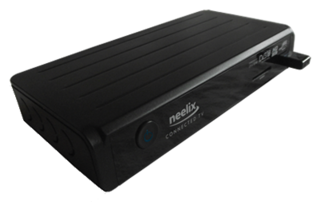
A set-top box (STB), also known as a cable box or receiver and historically television decoder, is an information appliance device that generally contains a TV-tuner input and displays output to a television set and an external source of signal, turning the source signal into content in a form that can then be displayed on the television screen or other display device. They are used in cable television, satellite television, and over-the-air television systems as well as other uses.

TiVo is a digital video recorder (DVR) developed and marketed by Xperi and introduced in 1999. TiVo provides an on-screen guide of scheduled broadcast programming television programs, whose features include "OnePass" schedules which record every new episode of a series, and "WishList" searches which allow the user to find and record shows that match their interests by title, actor, director, category, or keyword. TiVo also provides a range of features when the TiVo DVR is connected to a home network, including film and TV show downloads, advanced search, online scheduling, and at one time, personal photo viewing and local music playback.

An RF modulator is an electronic device used to convert signals from devices such as media players, VCRs and game consoles to a format that can be handled by a device designed to receive a modulated RF input, such as a radio or television receiver. Its input is a baseband signal, which is used to modulate a radio frequency source.

SCART is a French-originated standard and associated 21-pin connector for connecting audio-visual (AV) equipment. The name SCART comes from Syndicat des Constructeurs d'Appareils Radiorécepteurs et Téléviseurs, "Radio and Television Receiver Manufacturers' Association", the French organisation that created the connector in the mid-1970s. The related European standard EN 50049 has then been refined and published in 1978 by CENELEC, calling it péritelevision, but it is commonly called by the abbreviation péritel in French.

Composite video is an analog video format that typically carries a 525 or 625 line signal on a single channel, unlike the higher-quality S-Video and the even higher-quality component video.
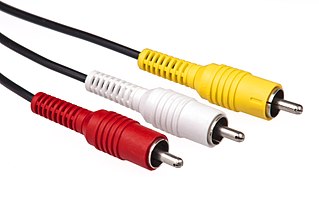
The RCA connector is a type of electrical connector commonly used to carry audio and video signals. The name RCA derives from the company Radio Corporation of America, which introduced the design in the 1930s. The connector’s male plug and female jack are called RCA plug and RCA jack.
A digital video recorder (DVR) is an electronic device that records video in a digital format to a disk drive, USB flash drive, SD memory card, SSD or other local or networked mass storage device. The term includes set-top boxes with direct to disk recording, portable media players and TV gateways with recording capability, and digital camcorders. Personal computers are often connected to video capture devices and used as DVRs; in such cases the application software used to record video is an integral part of the DVR. Many DVRs are classified as consumer electronic devices; such devices may alternatively be referred to as personal video recorders (PVRs), particularly in Canada. Similar small devices with built-in displays and SSD support may be used for professional film or video production, as these recorders often do not have the limitations that built-in recorders in cameras have, offering wider codec support, the removal of recording time limitations and higher bitrates.
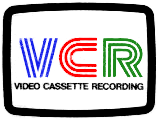
Video Cassette Recording (VCR) is an early domestic analog recording format designed by Philips. It was the first successful consumer-level home videocassette recorder (VCR) system. Later variants included the VCR-LP and Super Video (SVR) formats.
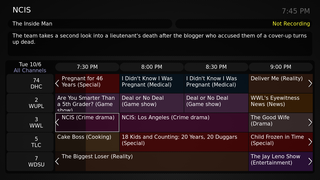
Electronic programming guides (EPGs) and interactive programming guides (IPGs) are menu-based systems that provide users of television, radio and other media applications with continuously updated menus that display scheduling information for current and upcoming broadcast programming. Some guides also feature backward scrolling to promote their catch up content. They are commonly known as guides or TV guides.

The Apple Interactive Television Box (AITB) is a television set-top box developed by Apple Computer in partnership with a number of global telecommunications firms, including British Telecom and Belgacom. Prototypes of the unit were deployed at large test markets in parts of the United States and Europe in 1994 and 1995, but the product was canceled shortly thereafter, and was never mass-produced or marketed.

A home theater in a box (HTIB) is an integrated home theater package which "bundles" together a combination DVD or Blu-ray player, a multi-channel amplifier, speaker wires, connection cables, a remote control, a set of five or more surround sound speakers and a low-frequency subwoofer cabinet. Manufacturers also have come out with the "Sound Bar," an all in one device to put underneath the television and that contains all the speakers in one unit.
V+ is a set-top box for Virgin Media's Virgin TV service, which provides personal video recording (PVR) and high definition (HD) functionality to customers who subscribe to the service. Virgin TV have taken a different approach from rival Sky's Sky+ and later Sky+ HD services, by implementing a rental scheme for the V+ Box. When Virgin TV was launched, there was an installation charge and a monthly charge for all customers with a discount for XL customers. On 1 June 2007 pricing was revised, with all customers paying a one-off set-up fee and TV M and L customers paid a monthly charge, while TV XL customers had no extra charges. Various deals to lower the set-up fee have been made available to all customers in order to compete with rival Sky.
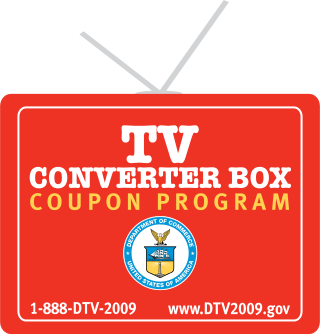
A coupon-eligible converter box (CECB) was a digital television adapter that met eligibility specifications for subsidy "coupons" from the United States government. The subsidy program was enacted to provide terrestrial television viewers with an affordable way to continue receiving free digital terrestrial television services after the nation's television service transitioned to digital transmission and analog transmissions ceased. The specification was developed by the National Telecommunications and Information Administration (NTIA), with input from the broadcast and consumer electronics industries as well as public interest groups.
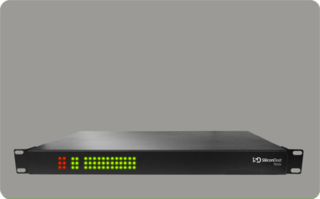
HDHomeRun is a network-attached digital television tuner box, produced by the company SiliconDust USA, Inc.

A cable converter box or television converter box is an electronic tuning device that transposes/converts channels from a cable television service to an analog RF signal on a single channel, usually VHF channel 3 or 4, or to a different output for digital televisions such as HDMI.

UPC was the largest cable operator in Switzerland with around 1.1 million residential and business customers and was formed in 1994 through the merger of several cable operators. UPC has been a subsidiary of Liberty Global since 2005.
Analog passthrough is a feature found on some digital-to-analog television converter boxes. Boxes without the analog passthrough feature only allow older, analog-only TVs to view digital TV. Those with analog passthrough allow both digital and analog television to be viewed on older TVs.
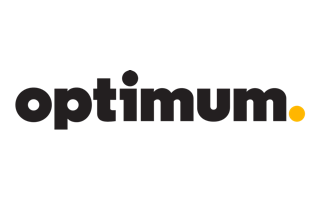
Optimum is an American telecommunications brand owned and operated by Altice USA. It is the fourth largest cable provider in the United States and a Fortune 500 company. Optimum offers Internet, television, mobile and home phone serving in Arizona, Arkansas, California, Connecticut, Idaho, Kentucky, Louisiana, Mississippi, Missouri, New Jersey, Long Island and New York, North Carolina, Oklahoma, Pennsylvania, Texas, and West Virginia.
















